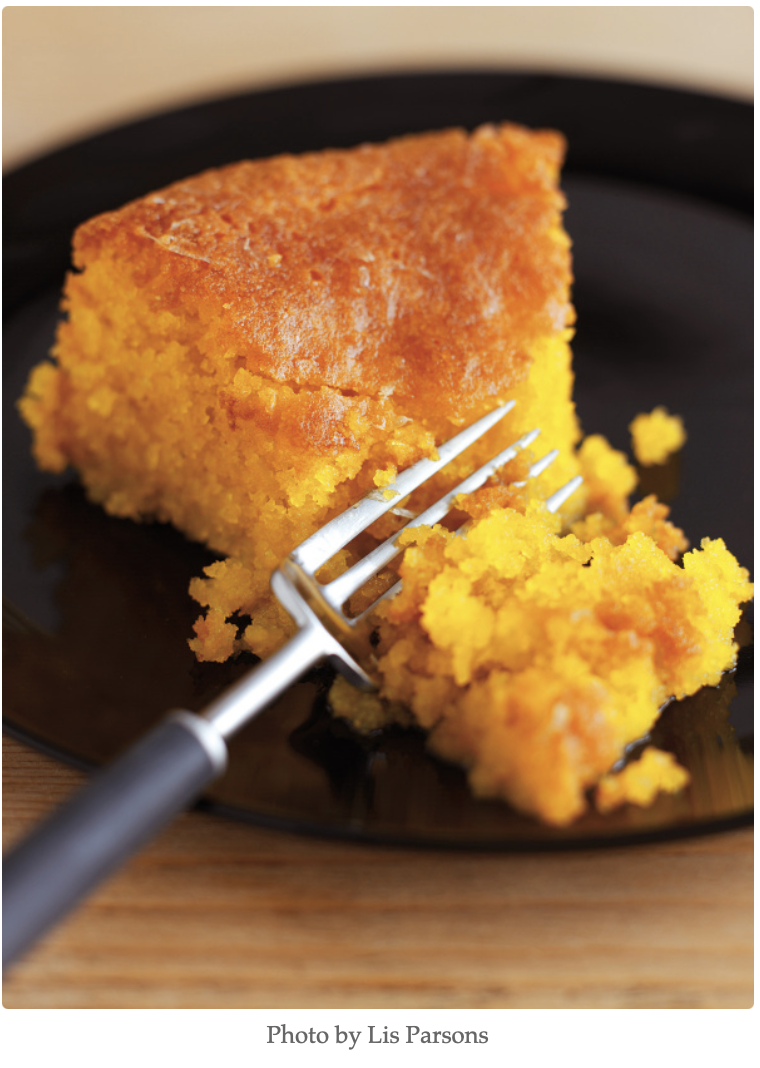Lemon Polenta Cake

from https://www.nigella.com/recipes/lemon-polenta-cake
by Nigella. Featured in KITCHEN
INTRODUCTION
This cake is a sort of Anglo-Italian amalgam. The flat, plain disc is reminiscent of the confections that sit geometrically arranged in patisserie windows in Italy; the sharp, syrupy sogginess borrows from the classic English teatime favourite, the lemon drizzle cake. It is a good marriage: I love Italian cooking in all respects save one — I find their cakes both too dry and too sweet. Here, though, the flavoursome grittiness of the polenta and tender rubble of ground almonds provide so much better a foil for the wholly desirable dampness than does the usual flour. But there is more to it than that. By some alchemical process, the lemon highlights the eggy butteriness of the cake, making it rich and sharp at the same time. If you were to try to imagine what lemon curd would taste like in cake form, this would be it.
And please read the Additional Information section at the end of the recipe before proceeding.
INGREDIENTS
Yields: 12-14 slices
FOR THE CAKE
- 1¾ sticks (200 grams) soft unsalted butter (plus some for greasing)
- 1 cup superfine sugar
- 2 cups almond meal
- ¾ cup fine polenta (or cornmeal)
- 1½ teaspoons baking powder (see NOTE below)
- 3 large eggs
- zest of 2 unwaxed lemons (save juice for syrup)
FOR THE SYRUP
- juice of the 2 unwaxed lemons above
- 1 cup confectioners' sugar
METHOD
- Line the base of a 23cm / 9inch springform cake tin with baking parchment and grease its sides lightly with butter.
- Preheat the oven to 180°C/160°C Fan/gas mark 4/ 350°F.
- Beat the butter and sugar till pale and whipped, either by hand in a bowl with a wooden spoon, or using a freestanding mixer.
- Mix together the almonds, polenta and baking powder, and beat some of this into the butter-sugar mixture, followed by 1 egg, then alternate dry ingredients and eggs, beating all the while.
- Finally, beat in the lemon zest and pour, spoon or scrape the mixture into your prepared tin and bake in the oven for about 40 minutes.
- It may seem wibbly but, if the cake is cooked, a cake tester should come out cleanish and, most significantly, the edges of the cake will have begun to shrink away from the sides of the tin. remove from the oven to a wire cooling rack, but leave in its tin.
- Make the syrup by boiling together the lemon juice and confectioners' sugar in a smallish saucepan.
- Once the confectioners' sugar’s dissolved into the juice, you’re done.
- Prick the top of the cake all over with a cake tester (a skewer would be too destructive), pour the warm syrup over the cake, and leave to cool before taking it out of its tin.
ADDITIONAL INFORMATION
NOTE: To make this cake gluten-free, make sure to use gluten-free baking powder, or omit the baking powder altogether and beat the batter exuberantly at step 4.
To make this cake dairy-free, substitute 150ml light and mild olive oil for the 200g of butter, making sure you still whisk the oil and sugar together very well in step 3.
MAKE AHEAD:
The cake can be baked up to 3 days ahead and stored in an airtight container in a cool place. Will keep for a total of 5-6 days.
FREEZE:
The cake can be frozen on its lining paper as soon as cooled, wrapped in a double layer of clingfilm and a layer of foil, for up to 1 month. Defrost for 3-4 hours at room temperature.